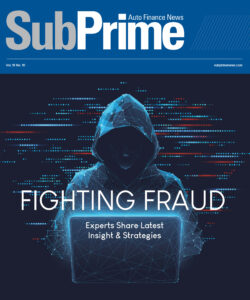Clarity’s latest research refutes more CFPB data analysis

Clarity Services’ research division, nonPrime101, published a new report this week based on a unique five-year data set of more than 100 million payday loans representing 20 percent of the storefront payday market.
Because of the unique size and duration of the data set, nonPrime101 set out to replicate statistical analyses used by the Consumer Financial Protection Bureau to build its case to radically regulate the storefront payday sector whose customers often fall into the subprime auto financing market, too.
Clarity’s report suggested that a significant number of consumers are unlikely to be harmed by the bureau’s own test, possibly meaning that more consumers may be actually harmed by the CFPB action that bans the product than will be harmed by continued availability of the product.
Because nonPrime101 noticed that extreme outliers impacting the bureau’s statistics showing CFPB harm, Clarity recommended that the bureau cut off the outliers, but not the entire industry. The company went into more detail in the report titled, Searching for Harm in Storefront Payday Lending.
“This report finds that the CFPB’s one-year snapshot is too short to discern the extent of ‘harms’ caused by the product and roughly 40 percent of storefront consumers are not likely to meet the CFPB’s cost-based definition of ‘harm.’ Independent data suggests many who do incur that cost-based ‘harm’ still benefit from the loan,” said Rick Hackett, former assistant director at the CFPB and current partner at Hudson Cook. Hackett is now part of nonPrime101’s small-dollar markets research team, who conducted the research and wrote the report.
Hackett and his team also found that the data results closely replicate reported CFPB findings such as the number of loan sequences per borrower in a 12-month period. However, when the same questions were applied to a more complete history of borrower behavior, over the entire market life cycle of borrower use, significant differences in outcomes and in the effect of biases of the CFPB testing methods were found.
“With more than half of consumers likely benefitting from the product, regulators’ plan to ban it goes too far, and this report suggests a more tailored intervention that would curtail extreme usage but retain credit access,” Hackett said.
The entire report can be downloaded here. Also on that page, Hackett shares a 40-minute video presentation explaining the report findings.

 View The Latest Edition
View The Latest Edition

